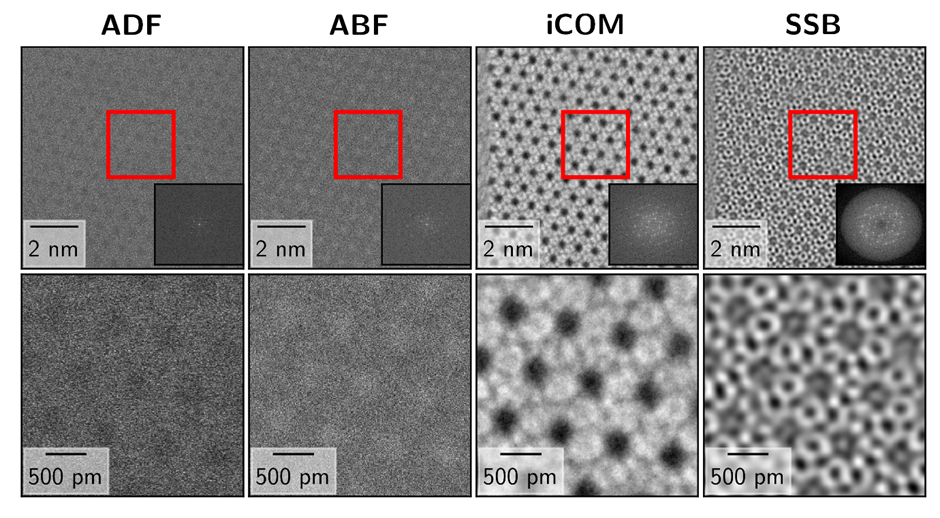EVENT DRIVEN ELECTRON DETECTION applied to 4D STEM
- Abstract number
- 103
- Presentation Form
- Poster & Flash Talk
- DOI
- 10.22443/rms.mmc2023.103
- Corresponding Email
- [email protected]
- Session
- Poster Session One
- Authors
- Dr Daen Jannis (1, 2), Dr. Christoph Hofer (1, 2), Chuang Gao (1, 2), Prof. Dr. Timothy Pennycook (1, 2), Prof, Dr. Jo Verbeeck (1, 2)
- Affiliations
-
1. EMAT, University Antwerp
2. NANOlab, University Antwerp
- Keywords
4D STEM
Low dose imaging
Event based detection
- Abstract text
In conventional transmission electron microscopy, images or/diffraction patterns are recorded using frame-based detectors. Namely, for each image, the electrons are detected over the whole pixel array of the camera over a fixed acquisition time before the whole pixel array is read out together. These types of detectors have dead time which range from tens of μs to ms, limiting the minimum acquisition time per image. In general, this is of no issue for imaging or single position diffraction. However, for 4D STEM this dead time is the main restriction on the minimal dwell time. This generally results in significantly longer measurement times compared to conventional ADF STEM imaging where microsecond dwell times are typically used. Despite this often severe restriction on the dwell time, 4D STEM has proven its capacity for dose efficient imaging, via for instance iCOM or SSB ptychography imaging modes. These types of reconstruction algorithms are able to unravel the phase information imparted to the beam electrons by the specimen. In this work we highlight the advantages of using an event-based detector (Timepix3) to detect the electrons instead of a frame based camera. This type of detector does not record frames but retrieves the time-of-arrival (TOA), and pixel position of each individual electron. The detector shares a 10 MHz clock with the scan unit which is necessary to correlate the TOA with the probe position. The time resolution of the Timepix3 is 1.56 ns, and the practical limits are imposed more by the maximum speed at which event data can be read out. Data readout is facilitated by event driven operation which allows one to take advantage of event sparsity to achieve a natural data compression by avoiding the readout of pixels containing zero counts when doing low dose experiments (around 1 pA). For example, a 10x1024x1024 multi frame scan at 1 us for a 256x256 detector in 1-bit mode has 86 Gb of data for a frame based camera. For the event based detection, this corresponds to 1.6 Gb which is considerably lower. We present 4D STEM results recorded at microsecond dwell times down to 100 ns at multiple acceleration voltages and discuss the characterization of the Timepix3. Additionally, we show how the speed enhancement aids multi-frame 4D STEM to increase the signal-to-noise with minimal susceptibility to drift (see Fig. 1).
Fig 1. A 1 μs dwell time 10x1024x1024 probe position scan of a silicate-1 zeolite. The reconstructed signals from the different methods are shown.
- References
[1] D. Jannis et al, Ultramicroscopy 233, 113423, (2022).
[2] We acknowledge funding from G093417N, G042920N, No 823717 – ESTEEM3. and European Research Council Grant no. 802123-HDEM.

